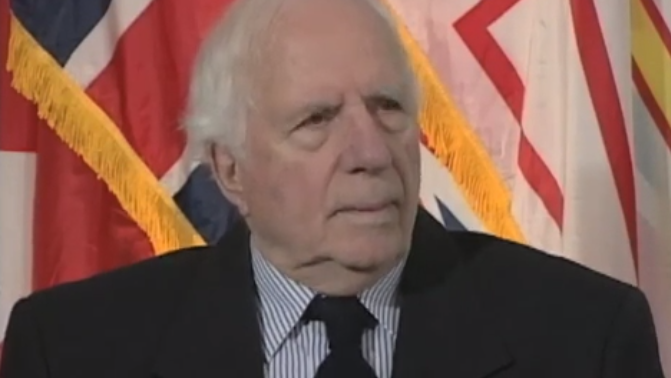Description of the Livingston
Heroes Remember
Description of the Livingston
Transcript
Description
Mr. Blackmore describes the Livingston, the ship on which he was torpedoed. He details the impact of the torpedo as well as her sinking.
Wilfred K. Blackmore
Wilfred Blackmore was born in St. John’s, Newfoundland on November 21, 1920. His father was a seaman who freighted cargo between Newfoundland and Labrador. Mr. Blackmore left St. John's at the age of 21 for Corner Brook where he began sailing for Bowaters transporting pulp. As the eldest son, he was now the bread winner for his family. His ship, the SS Livingston, a British registered merchant ship and converted lake boat, was torpedoed on November 2, 1941, while transporting 2000 tons of coal and other cargo from Boston to the American forces base in Argentia, Newfoundland. One of 14 survivors to reach St. John’s, Mr. Blackmore continued to serve in the Merchant Navy until the war ended. Following the war, he taught seamanship at the navigational school in St. John’s.
Meta Data
- Medium:
- Video
- Owner:
- Veterans Affairs Canada
- Duration:
- 02:11
- Person Interviewed:
- Wilfred K. Blackmore
- War, Conflict or Mission:
- Second World War
- Location/Theatre:
- Atlantic Ocean
- Battle/Campaign:
- Battle of the Atlantic
- Branch:
- Merchant Navy
- Rank:
- First Mate
Related Videos
- Date modified:






